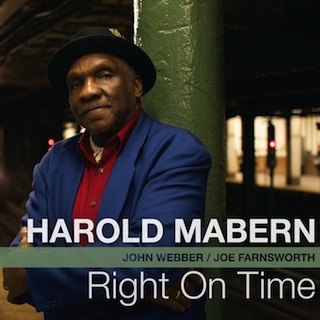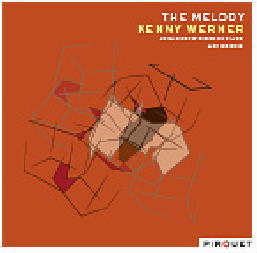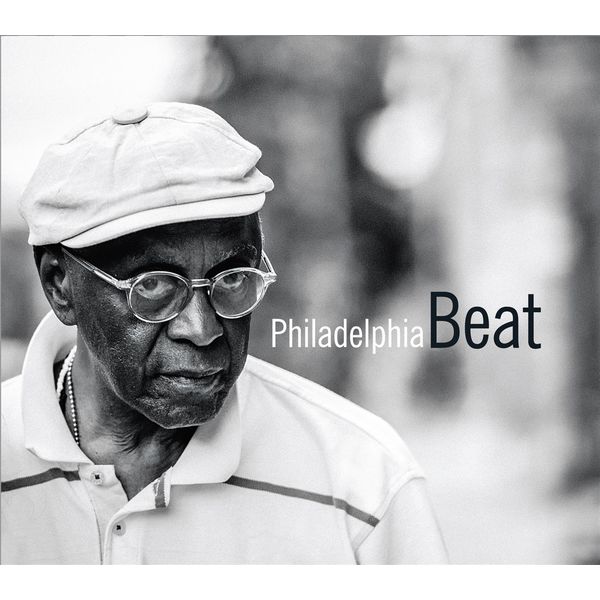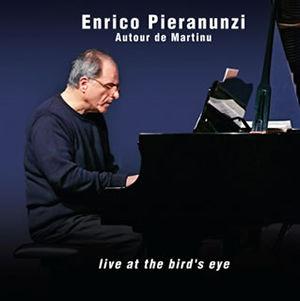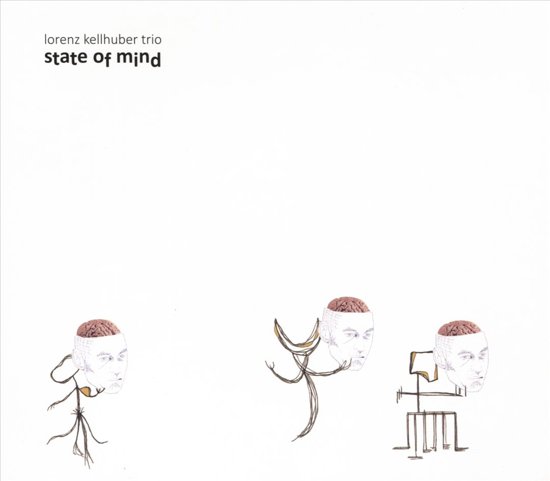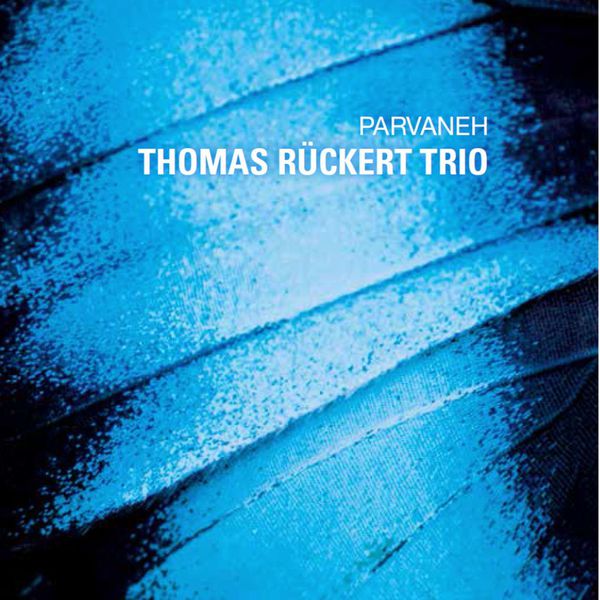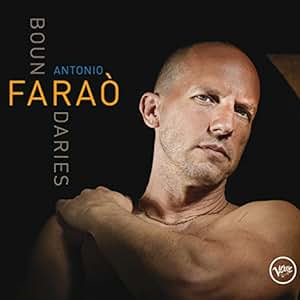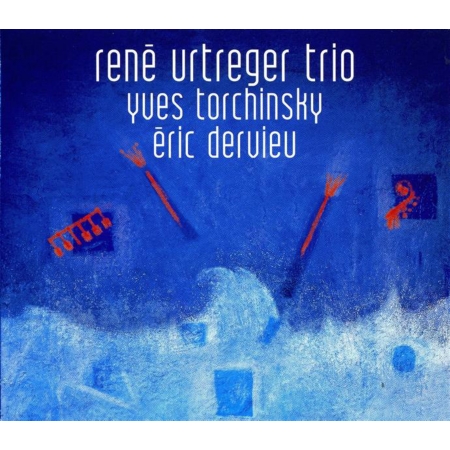My Ideal

By Ian Mann
I first became aware of the playing of the young Brooklyn based pianist Glenn Zaleski in March 2015 when he appeared at Dempsey’s in Cardiff as part of an international quartet led by British born bassist and composer Phil Donkin who was touring in support of his début solo album “The Gate” (Whirlwind Recordings).
Zaleski plays on that record alongside fellow American Ben Wendel (tenor sax) and the German born drummer Jochen Rueckert. The line up at Cardiff featured Donkin, Zaleski, Wendel and British drummer James Maddren and the performance is reviewed elsewhere on this site along with a look at the recording itself.
I was very impressed with Zaleski’s contribution to both the “Gate” album and the Cardiff show. He is an inventive and imaginative pianist, a fluent soloist who plays in a refreshingly unclichéd manner. I spoke to him during the interval and also found him to be a genuinely nice guy -as most jazz musicians are - and he was later kind enough to mail me a review copy of this, his début album as a leader, direct from New York. Thanks, Glenn.
A glance at Zaleski’s website http://www.glennzaleski.com shows him to be a musician with a busy schedule who plays regularly with some of the leading figures on the New York jazz scene including guitarists Gilad Hekselman, Lage Lund and Jonathan Kreisberg, bassists Ben Street and Michael Olatuja, drummers Ari Hoenig, Johnathan Blake and Colin Stranahan and saxophonist Ravi Coltrane.
On disc Zaleski has been part of a co-operative trio featuring Stranahan and bassist Rick Rosato that has released two albums to date (“Anticipation”, 2011 and “Limitless” , 2013) and has also worked with his saxophonist brother Mark (“Duet Suite”, 2010 ). He also has an extensive and varied back catalogue of recordings as a sideman which can be viewed in full on his website.
“My Ideal” is essentially a collection of Zaleski’s favourite standards and teams him with bassist Dezron Douglas and drummer Craig Weinrib, both regular collaborators. Ravi Coltrane guests on tenor sax on the closing track “I’m Old Fashioned”. Alongside the better known tunes the trio also interpret two contemporary compositions by bassist Rick Rosato and vibraphonist Peter Schlamb.
Zaleski has publicly acknowledged the influence of the Bill Evans Trio on his music and this is something that is implicit throughout “My Ideal” as evidenced by Zaleski’s lightness of touch at the keyboard and the integral, but always tasteful involvement of bass and drums.
The trio set their stall out with a gently swinging interpretation of Jerome Kern’s “Nobody Else But Me” with Zaleski darting nimbly around the keyboard supported by Douglas’ immaculate bass grooves and the quiet bustle of Weinrib’s finely detailed but unobtrusive brush work.
“Waltz For MD”, presumably a tribute to Miles Davis, was written by bassist Rick Rosato, Zaleski’s colleague from the trio with Colin Stranahan. It’s a genuine waltz (another example perhaps of the Bill Evans influence) with an engaging melody that sounds as if it could have been around for years. Zaleski explores and develops the melody in fascinating fashion and there’s also something of a feature for the excellent Douglas.
Jule Styne’s “Make Someone Happy” is a tune that is closely associated with Bill Evans. The sense of calm spaciousness that Zaleski finds in this extended interpretation owes much to the spirit of the master as Douglas and Weinrib fill the LaFaro and Motian roles to perfection.
Charlie Parker’s “Cheryl” represents a different kind of challenge but it’s one that the trio tackle with relish and aplomb as they wrap their collective fingers around Parker’s notoriously tricky compositional lines. The arrangement includes a bravado passage of unaccompanied piano from the highly talented Zaleski followed by an equally coruscating piano solo propelled by Douglas’ rapid bass lines. Weinrib enjoys a sparky drum feature and supplies briskly brushed support elsewhere.
A luminous arrangement of Johnny Green’s classic “Body and Soul” then offers further evidence of Zaleski’s way with a ballad but also brings a contemporary sensibility to one of the most frequently recorded items in the jazz canon. There’s also a gorgeously melodic solo from Douglas, a player who impresses throughout the album.
“REL” was written by one of Zaleski’s young New York based contemporaries, the vibraphonist Peter Schlamb. Its modern feel and contemporary rhythms represent a welcome variation from the predominately “Songbook” material. Zaleski and his colleagues serve their friend’s composition well with Weinrib enjoying another brief moment in the spotlight.
“Arietis” is a little known Freddie Hubbard tune that is given a lively, boppish reading by the trio with Zaleski in sparkling form at the piano and interacting well with the busy rhythm section of Douglas and Weinrib. Bassist Douglas again features strongly with yet another fluent and imaginative solo.
A thoughtful and evocative passage of solo piano introduces Richard A.Whiting’s title track . The playing throughout this piece is delightfully lyrical and includes a melodic solo from Douglas alongside the leader’s limpidly flowing piano and Weinrib’s admirably understated brush work.
Jerome Kern tunes bookend the album as Ravi Coltrane finally comes to the table with his own arrangement of “I’m Old Fashioned”. Coltrane’s tenor almost inevitably sounds a little like that of his father as he brings something of a “spiritual jazz” feel to the opening section of the piece. There’s a later injection of pace that leads to a feverishly inventive Zaleski solo that develops into a thrilling dialogue with Weinrib’s drums. There is an authority to Coltrane’s own solo that is clearly steeped in the family lineage.
“My Ideal” was immaculately recorded in New York by an engineering team of Michael Brorby and Dave Darlington with Zaleski himself producing. The final mix captures all the nuances of the trio’s playing and the three musicians sound good both individually and collectively.
Overall the album is a good representation of Zaleski’s talents and it is clear that he is a young musician with an enormous technical facility and a high degree of potential. It’s an excellent recording in its own right but it is a rather conservative one with arguably an over reliance on the standard repertoire. It is a success on its own terms but good as it is I’d have liked to have heard some of Zaleski’s own compositions and would have appreciated more of a contemporary feel overall.
Perhaps this will represent the next step for Zaleski, although to be fair this may already be what he is doing with Rosato and Stranahan. I’ve not heard either of those albums and thus can’t really comment.
In any event I really like his playing and Glenn Zaleski is clearly a young musician to keep an eye on in the years ahead.
Dario Carnovale
Emersion

By Bruce Lee Gallanter
The only member of this quartet with whom I am previously familiar is saxist Francesco Bearzatti who has three discs as a leader also on Auand and is a member of several other bands including the great trombonist Gianluca Petrella. Mr. Bearzatti has a strong, warm and marvelous tone on tenor sax which fits perfectly with the McCoyish piano of Mr. Carnovale. After the majestic theme in ‘Part 1′ of the title piece, the quartet work their way through group and solo sections, all of which evolve in an impressive, organic or thematic way. Both Mr. Carnovale on piano and Mr. Bearzatti on tenor are gifted soloists and they work especially well together tossing lines back and forth effortlessly. This disc is a well produced studio recording, perfect in many ways. If it were played on jazz radio and heard by enough listeners, this could be a hit. No this is not smooth in any way but it is a successful effort on many other levels.
Personnel:
Francesco Bearzatti - tenor saxophone; Dario Carnovale - piano; Simone Serafini - double bass;
Luca Colussi - drums
George Cables
Icons & Influences

By Waterfront
George Cables is the embodiment of elegance and sophistication.

By Bruce Lee Gallanter
The only member of this quartet with whom I am previously familiar is saxist Francesco Bearzatti who has three discs as a leader also on Auand and is a member of several other bands including the great trombonist Gianluca Petrella. Mr. Bearzatti has a strong, warm and marvelous tone on tenor sax which fits perfectly with the McCoyish piano of Mr. Carnovale. After the majestic theme in ‘Part 1′ of the title piece, the quartet work their way through group and solo sections, all of which evolve in an impressive, organic or thematic way. Both Mr. Carnovale on piano and Mr. Bearzatti on tenor are gifted soloists and they work especially well together tossing lines back and forth effortlessly. This disc is a well produced studio recording, perfect in many ways. If it were played on jazz radio and heard by enough listeners, this could be a hit. No this is not smooth in any way but it is a successful effort on many other levels.
Personnel:
Francesco Bearzatti - tenor saxophone; Dario Carnovale - piano; Simone Serafini - double bass;
Luca Colussi - drums
George Cables
Icons & Influences

By Waterfront
George Cables is the embodiment of elegance and sophistication.
Piano trios dot the landscape like taxi cabs and Starbucks when visiting New York. Good pianists are a dime a dozen, great pianists include a fixture on the Big Apple scene and that pianist is George Cables. As a leader George goes back to his 1975 debut with Why Not while most people are perhaps more familiar with his work with such artists as Woody Shaw and Dexter Gordon along with drum legend Victor Lewis. Given that Cables has usually allowed bassists free reign on the bandstand the end result takes the standard piano to a new level of harmonic conversation.Some tunes here speak for themselves and include "Cedar Walton" and "Farewell Mulgrew." There are other somewhat surprising and slightly eclectic tunes such as "Nature Boy" and a more deconstructed Dexter Gordon riff on "The Very Thought of You." The adaptability and trust that runs throughout this trio would give some the impression of a group that may have been together a decade or more. A utility infielder travels his baseball path with a plethora of skills and the ability to plug himself into any situation, George Cables is no different. The rhythm section of Dezron Douglas and Victor Lewis add a textural lift to the ensemble and set this trio apart from their contemporaries.A few "rarities" pop up in the form of the Bill Evans tune "Very Early" and a warm reharm of the Benny Golson tune "Blue Heart." This is a master class for pianists working the trio format, not everything has to be from the Cole Porter catalog, it has to be from your heart and from your soul. George Cables gives us a keen insight into his lyrical soul and we are better for it.
Sachal Vasandani
Hi - Fly

By Ken Dryden
Many critics have lamented the relatively rare appearance of memorable male jazz vocalists over a stretch of several decades. Sachal Vasandani is a promising singer gifted with a wide range and an expressive, strong tone that brings out the essence of each lyric. His third CD finds him backed by pianist Jeb Patton (whose work with the Heath Brothers has garnered considerable praise), bassist David Wong, and drummer Kendrick Scott. The imaginative arrangement of the standard "The Very Thought of You" is a group effort with a strong assist from Erik Privert, utilizing a breezy Latin rhythm and featuring a potent backing line by guest John Ellis on tenor sax. Two duets feature the legendary vocalist Jon Hendricks: a hilarious rendition of "One Mint Julip," which also has some fun-filled scat singing by both men, and Randy Weston's "Hi-Fly," which adds a newly written lyric by Vasandani. The leader's rich voice is best on display with his thoughtful interpretation of "Here Comes the Honey Man" (a duet with Patton), which segues directly into "There's a Boat That's Leaving Soon for New York" (both pieces are from George Gershwin's Porgy and Bess), the latter in which Vasandani's vocal sounds as if it has long been part of his repertoire. The singer also penned several originals, including the hip "Babe's Blues" (featuring the rising young trumpeter Ambrose Akinmusire) and the haunting, deliberate ballad "Flood." There's an obvious hint of Frank Sinatra in his moving performance of "All the Way," a duet with Patton that closes the album with a flourish.
Holly Hofmann & Bill Cunliffe
Three's Company

By Michael G. Nastos
Flutist Holly Hofmann and pianist Bill Cunliffe are on their third time around formally in the recording studio, even though they’ve performed with each other numerous times for 20 years. Three’s Company does, in fact, include four duet performances, but the other half of the tracks show up in trio settings, featuring one cut apiece with violinist Regina Carter, trumpeter Terell Stafford, clarinetist Ken Peplowski, or drummer Alvester Garnett. There’s a mix of predictability and certain surprise in these standards and originals, as you expect from seasoned veterans seeking new horizons. Cunliffe and Hofmann have always strived for perfection, but also offer a great deal of lyrical depth and substance as these thoroughly professional mainstream jazz players do their thing. Of the duets, they do a quaint two-step version of “Too Late Now,” showcase the Cunliffe tribute to the late Jorge Dalto on a Chick Corea-ish, Spanish heart-styled “Dalto” especially from the pianist’s solo, go classical on Gabriel Fauré’s somber ballad “Pavane,” and close with another Cunliffe original (there are four on the date,) the simple “Farewell.” Carter’s violin is always robust, but here stretches out for the nine-minute, melancholy but lucid version of “Star Crossed Lovers,” mixing in some counterpoint with Hofmann. Peplowski’s feature “Reunion” departs from expected strict swing into a modernistic 6/8 modal framework, loaded with staccato accents, while Stafford’s playful, snappy trumpet identifies the title selection, Hofmann’s lone composition, and the most jazz-oriented tune here. Where drummer Garnett’s strength lies in his flexibility providing traditional to contemporary rhythms, “Sweet Andy” is more of a post-bop jam, with everybody cutting loose, inspiring Cunliffe and Hofmann to play a fleet unison line. While there’s nothing groundbreaking about this album, the individuality of each player forms a mutual bond, and a unified whole without a bassist or central timekeeper. Cunliffe and Hofmann are always in good company together, but here they raise the stakes on what sounds like a very comfortable union, producing a winning product.
Sachal Vasandani
Hi - Fly

By Ken Dryden
Many critics have lamented the relatively rare appearance of memorable male jazz vocalists over a stretch of several decades. Sachal Vasandani is a promising singer gifted with a wide range and an expressive, strong tone that brings out the essence of each lyric. His third CD finds him backed by pianist Jeb Patton (whose work with the Heath Brothers has garnered considerable praise), bassist David Wong, and drummer Kendrick Scott. The imaginative arrangement of the standard "The Very Thought of You" is a group effort with a strong assist from Erik Privert, utilizing a breezy Latin rhythm and featuring a potent backing line by guest John Ellis on tenor sax. Two duets feature the legendary vocalist Jon Hendricks: a hilarious rendition of "One Mint Julip," which also has some fun-filled scat singing by both men, and Randy Weston's "Hi-Fly," which adds a newly written lyric by Vasandani. The leader's rich voice is best on display with his thoughtful interpretation of "Here Comes the Honey Man" (a duet with Patton), which segues directly into "There's a Boat That's Leaving Soon for New York" (both pieces are from George Gershwin's Porgy and Bess), the latter in which Vasandani's vocal sounds as if it has long been part of his repertoire. The singer also penned several originals, including the hip "Babe's Blues" (featuring the rising young trumpeter Ambrose Akinmusire) and the haunting, deliberate ballad "Flood." There's an obvious hint of Frank Sinatra in his moving performance of "All the Way," a duet with Patton that closes the album with a flourish.
Holly Hofmann & Bill Cunliffe
Three's Company

By Michael G. Nastos
Flutist Holly Hofmann and pianist Bill Cunliffe are on their third time around formally in the recording studio, even though they’ve performed with each other numerous times for 20 years. Three’s Company does, in fact, include four duet performances, but the other half of the tracks show up in trio settings, featuring one cut apiece with violinist Regina Carter, trumpeter Terell Stafford, clarinetist Ken Peplowski, or drummer Alvester Garnett. There’s a mix of predictability and certain surprise in these standards and originals, as you expect from seasoned veterans seeking new horizons. Cunliffe and Hofmann have always strived for perfection, but also offer a great deal of lyrical depth and substance as these thoroughly professional mainstream jazz players do their thing. Of the duets, they do a quaint two-step version of “Too Late Now,” showcase the Cunliffe tribute to the late Jorge Dalto on a Chick Corea-ish, Spanish heart-styled “Dalto” especially from the pianist’s solo, go classical on Gabriel Fauré’s somber ballad “Pavane,” and close with another Cunliffe original (there are four on the date,) the simple “Farewell.” Carter’s violin is always robust, but here stretches out for the nine-minute, melancholy but lucid version of “Star Crossed Lovers,” mixing in some counterpoint with Hofmann. Peplowski’s feature “Reunion” departs from expected strict swing into a modernistic 6/8 modal framework, loaded with staccato accents, while Stafford’s playful, snappy trumpet identifies the title selection, Hofmann’s lone composition, and the most jazz-oriented tune here. Where drummer Garnett’s strength lies in his flexibility providing traditional to contemporary rhythms, “Sweet Andy” is more of a post-bop jam, with everybody cutting loose, inspiring Cunliffe and Hofmann to play a fleet unison line. While there’s nothing groundbreaking about this album, the individuality of each player forms a mutual bond, and a unified whole without a bassist or central timekeeper. Cunliffe and Hofmann are always in good company together, but here they raise the stakes on what sounds like a very comfortable union, producing a winning product.
Cyrus Chestnut
A Million Colors In Your Mind

By Matt Collar
Roughly 18 albums into his career, jazz pianist Cyrus Chestnut delivers his HighNote record label debut with 2015's A Million Colors in Your Mind. With a title that borrows inspiration from a short story by Mexican author Maria Cristina Mena, the album finds Chestnut once again delving deep into his own colorfully chorded and swinging set of well-chosen cover songs. Although in his mid-fifties at the time of recording, Chestnut nonetheless wanted to record an album in which he could commune with musicians who were slightly older and more seasoned than himself. Accordingly, backing Chestnut here are the supremely intuitive duo of bassist David Williams and drummer Victor Lewis, who certainly bring decades of experience to Chestnut's album and, based on cuts like the trio's fluid take on Frank Loesser's gospel-infused "Brotherhood of Man" and Lewis' own "From a Tip," have an affinity for each other's playing. That said, the choice to work with experienced musicians is not a new one for Chestnut, who came up early in his career backing legendary vocalist Betty Carter, a position he inherited, in part, from Carter's longtime collaborator pianist John Hicks. Here, Chestnut even plays a Hicks composition, the atmospheric waltz "Yemenja." Elsewhere, Chestnut and his trio dig into a handful of urbane, soulful songs, from a sparkling take on late bassist Scott LaFaro's "Gloria's Step" to an inspired reworking of Lionel Richie's "Hello" and a languid, Latin-inflected version of Duke Ellington's "Day Dream." Ultimately, Chestnut continues to dazzle with A Million Colors in Your Mind, revealing ever more tantalizing musical layers.





